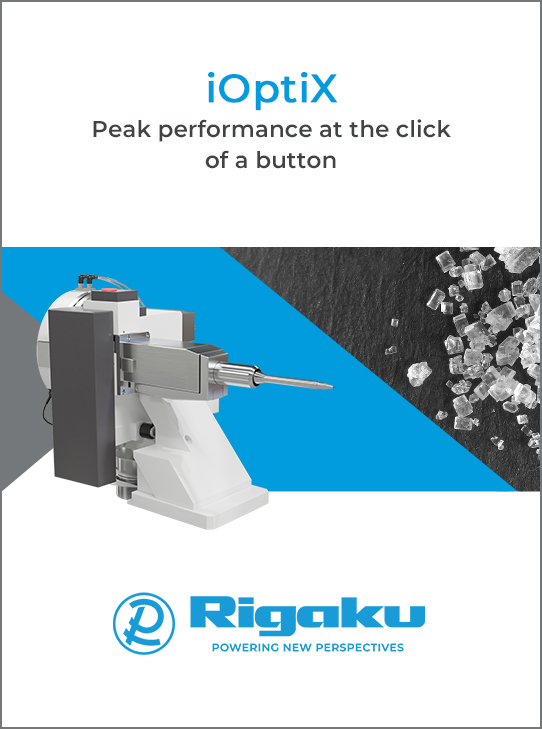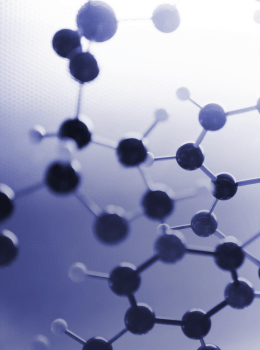


Regional news
Crystallographic reflections: A history of the Society of Crystallographers in Australia and New Zealand
![Thumbnail [Thumbnail]](https://www.iucr.org/__data/assets/image/0006/157524/thumbnail.jpg)
Crossing the Nullarbor Plain from Perth, Western Australia, on the 1,700 km long Eyre Highway to attend the Crystal 5 meeting at Monash University, Victoria, in August 1967. Left to right: Biswanith Mukajee, Syd Hall and Ted Maslen. Photo credit: Syd Hall, using a time delay on the camera exposure, judging from the shadow of the tripod. Image reproduced from the IUCr photo gallery.
I joined the (then) Society of Crystallographers in Australia (SCA) soon after its formation in 1976 and was privileged to serve as its Honorary Secretary for three terms from 1982. However, work eventually took me away from direct participation in crystallographic research, and I lost touch with the Society. Many years later, after reconnecting, I realized that crystallography and the Society had changed significantly. The original pioneers of the Society, to whom it owed a great debt, were greatly diminished in number, and unless its rich and illustrious history was soon recorded, it would be lost forever. In early 2022, I contacted the then President (Megan Maher) and the Council of the now Society of Crystallographers in Australia and New Zealand and offered to write its history. To my delight, they accepted my offer; some snippets from the resultant manuscript are provided below.
The Society of Crystallographers in Australia and New Zealand (SCANZ) has existed in three configurations over the last 60+ years. The first version is generally recognized as emerging in May 1961 in association with the first ‘open’ (i.e. not just internal institutional) meeting of Australian crystallographers (since dubbed ‘Crystal 1’) at the University of Sydney. This meeting of what later became known as the ‘Bush Crystallographers’ was the initiative of Hans Freeman, then Professor of Chemistry at the University of Sydney. Hans was also central to the movement in 1973 to establish the Society of Crystallographers in Australia (SCA) and was elected as its inaugural President at the Crystal 10 meeting in Richmond, NSW, in April 1976. In acknowledgment of the major and long-term engagement of colleagues from ‘across the ditch’ (aka New Zealand), the name was changed to the Society of Crystallographers in Australia and New Zealand (SCANZ) at the Crystal 21 meeting in Thredbo, NSW, in February 2000.
The original Bush Crystallographer ‘members’ were a small group of individuals who, for the most part, had learned their trade as postgraduate or postdoctoral students overseas, working with some of the icons of crystallography in the early post-WWII period (inter alia Kathleen Lonsdale, Linus Pauling, Dorothy Hodgkin, Edward W. Hughes and J. Monteath Robertson). Among these, first-generation Australian pioneers in the early 1950s and 1960s may be counted: Hans Freeman (Sydney University); ‘Sandy’ Mathieson, Barrie Dawson and Dave Wadsley (CSIRO); Jack McConnell and Nev Stephenson (University of NSW); Maureen Mackay (La Trobe University); Alan White, Jim Graham and Ted Maslen (University of Western Australia); Bryan Gatehouse (Monash University) and Terry Sabine (Australian Atomic Energy Commission, now ANSTO).
They established the first tranche of significant crystallography laboratories in Australia and were key players in the organisation of the early Crystal meetings and the formation of the SCA. Their graduate students, in turn, established second-generation groups at other universities and research institutions in Australia and overseas. A corresponding group of New Zealand crystallographers founded major laboratories at Industrial Research Lower Hutt (George Patterson), University of Auckland (F. J. Llewellyn), University of Canterbury (Bruce Penfold) and University of Otago (A. J. Ellis). Fig. 1 shows some of these key players at Crystal 1 at Sydney University in 1961, and Fig. 2 shows several others, probably at Crystal 4 at Lucas Heights in 1966.
![[Fig. 1]](https://www.iucr.org/__data/assets/image/0010/157573/Fig.-1new.png)
![[Fig. 2]](https://www.iucr.org/__data/assets/image/0008/157526/Fig.-2.png)
Throughout its existence, both as a collective and through its individual members, SCANZ has played a very significant role in the development of the crystallography landscape in Australia, New Zealand and overseas. It was a foundation partner in the Federation of Scientific and Technological Societies (FASTS), the political lobby group for increased funding for Australian science and technology; it was a major actor in the push for funding for Australian access to major synchrotron and neutron facilities overseas (the so-called ‘suitcase science’/‘Small Country Big Science’ initiative). Its members were prime movers in the establishment of the Australian National Beamline Facility (ANBF) at the Tsukuba synchrotron in Japan, and they were also key advocates for the establishment of the Australian Synchrotron and the new OPAL research reactor. They also led or participated in many of the technical committees advising on the type and design of beamlines for those facilities. Along with the Crystallographic Society of Japan, the Society was a strong proponent and prime mover in the establishment of the Asian Crystallographic Association (AsCA) in 1987 and, until recently, one of only four Regional Associates of the International Union of Crystallography (IUCr).
Through the Society’s ex officio representative (and other independent members) on the National Committee for Crystallography of the Australian Academy of Science, the Society is (in practical terms) the primary link for Australia’s engagement with the IUCr. Society members have acted as President and Vice-President of the IUCr, served on its Executive Committee, and occupied seats on all 22 Commissions of the IUCr at one time or another, often as Chair. It has been the organiser of two of the IUCr Congresses and General Assemblies held since 1948, the 14th in Perth in 1987 and the 26th in Melbourne in 2023, and it devoted considerable resources to the Australia-wide celebration of the International Year of Crystallography in 2014. It maintains a strong supportive presence (both financial and participatory) in AsCA meetings.
Since 1961, its series of regular national meetings (to date, 34 and counting; Fig. 3) and, since 1980, its Newsletters (79 and counting) have provided critical and effective platforms for the exchange and dissemination of scientific information, science politics and personalia, past, present and future in the domestic and international crystallographic domains.
![[Fig. 3]](https://www.iucr.org/__data/assets/image/0009/157527/Fig.-3.png)
The Crystal meetings and newsletters continue to provide an important and fertile connection point for professional and student crystallographers in Australia and New Zealand. They have served to celebrate and encourage the achievements of members and to engender a sense of a crystallographic community across both nations. From interviews with some of the early participants in these meetings (and from my own recollections), they were certainly memorable affairs, often showcasing (aside from science) the musical, singing and raconteurial talents of otherwise quite often shy and retiring scientists. Not to be missed, as evidenced by the small groups of crystallography lecturers from the University of Western Australia and their students who were willing to endure a road trip over 3–4 days (with rotating drivers and sparse accommodation) of more than 3,400 km, in part across the Nullarbor Plain on the then unsealed (dirt) Eyre ‘Highway’, from Perth to Melbourne to attend the meetings, and back again (see top photo).
Along with the Crystal and IUCr meetings, SCANZ has organised several significant one-off events, including the Bragg Symposium in Adelaide in 2012 to mark the centenary of the founding of X-ray crystallography by W. Lawrence Bragg (born and educated in Adelaide), a field in which he and his father, William H. Bragg, made pre-eminent contributions recognised by the award of the Nobel Prize for Physics in 1915. Another event was the 1991 dedication ceremony for the ‘A.D. Wadsley X-ray Laboratory’, held at the CSIRO Division of Mineral Products, Port Melbourne, in recognition of David Wadsley's pioneering contributions to crystallography and solid-state chemistry (Fig. 4). Participants included David’s family and many of his friends and colleagues (most of whom were foundation members of the SCA) from around the country and overseas.
![[Fig. 4]](https://www.iucr.org/__data/assets/image/0010/157528/Fig.-4.jpg)
The structure and culture of the Society have gone through several major changes over its 60+ years, from an ad hoc small informal grouping of most of the early crystallographers in Australia funded by local organising institutions to its present position as a formally incorporated entity with active global engagement and a membership of nearly 300 people, around 50% of whom are students. Its financial resource is now more than AUS$2.3M, the investment returns from which allow it to offer travel scholarships to prominent overseas speakers and students to attend national and international meetings. These funds also enable awarding of the Bragg and Mathieson Medals to outstanding mature and early-career researchers at each Crystal meeting.
Diversity and gender equity was introduced in 2020 as a formal policy of the Society, applied in particular to Office Bearers and speaking and session-chair roles at all its meetings. It has also instituted a policy of encouraging young researchers through its Rising Stars Awards at each national meeting, along with an allowance for carer’s provisions.
From its initial focus (typical of the time) on the crystallography of inorganic materials and minerals, the Society has embraced increasing focus on structural biology as humanity responds to the need for greater understanding of the nature and function of molecules essential to life. It is also adjusting to the massive change in the ‘face’ of the science of crystallography over the years, from a unique and important discipline in its own right to a still extremely important but now largely enabling discipline underpinning the broader biological, materials, chemical and physical sciences. Emerging technologies and software, such as cryo-EM and massive protein folding algorithms based on artificial intelligence for the solution of macromolecule structures, are also providing new challenges.
Although crystallographic data collection and structure solution is now, for most compounds, largely automated, the need for advances in crystallographic science and equipment to deal with ever larger and more complex materials (especially in the biological domain) has ensured that the discipline remains as important and rewarding for researchers as ever. The Society has greatly assisted adaption to these changes through its generous financial support for student attendance at national and international crystallography meetings and its continued commitment to the teaching of crystallography through its Australian Crystallography Schools (in partnership with the Australian Synchrotron), which have operated since 2008.
As a result of all these actions, the Society’s meetings remain relevant and exciting, and continue to attract the best speakers from home and abroad by showcasing the most relevant and exciting science of the day.
Dr Roderick J. Hill DSc FTSE FRACI FAusIMM was Secretary of the SCA 1982–1987. He is a former Chief Research Scientist at CSIRO and PVC for Industry Engagement and Commercialisation at Monash University, Victoria, Australia.
Copyright © - All Rights Reserved - International Union of Crystallography







